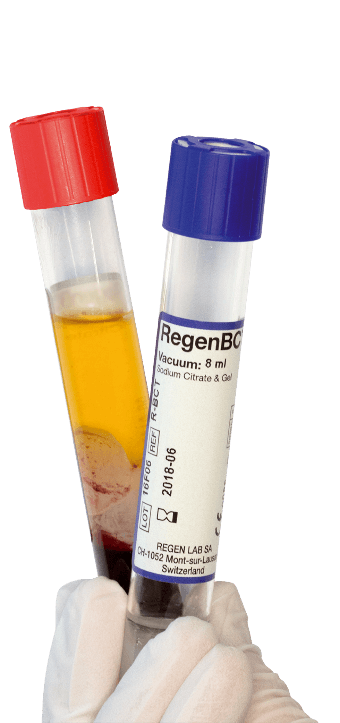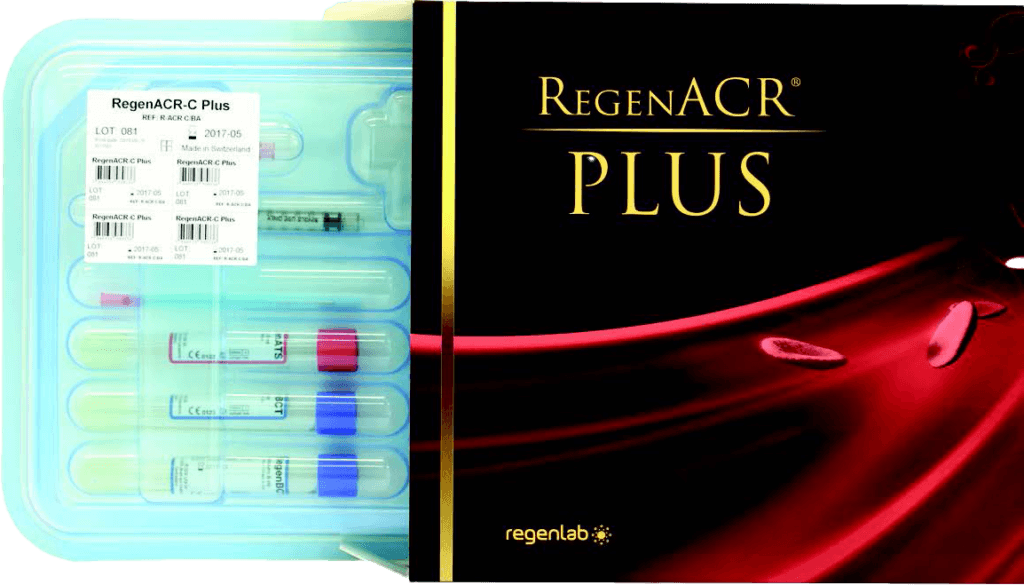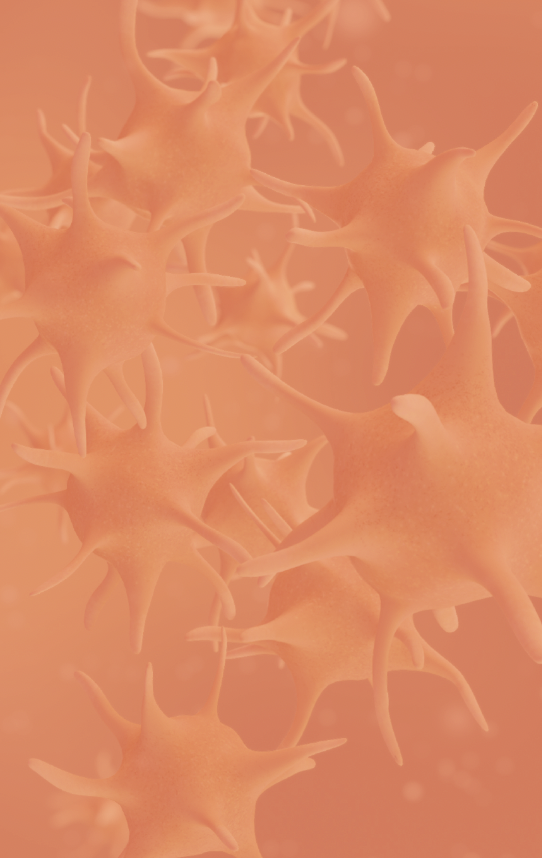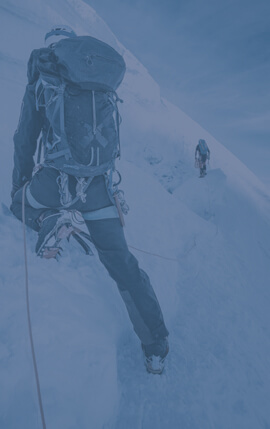What is RegenATS technology® ?
The combination of RegenPRP® and RegenATS® offers different application possibilities. By adding ATS to the liquid PRP, different strengths can be achieved. In this way, Regen PRP can be brought into the optimal state and shape for the respective application. The result is a leukocyte-reduced platelet gel (platelets embedded in the fibrin matrix), which can also be used as a dimensionally stable membrane if required. The leukocyte-reduced platelet gel has adhesive properties and falls under the scope of tissue engineering.

PRP gel preparation with RegenKit ACR Plus
The addition of autologous thrombin serum (ATS) to the Regen PRP physiologically starts the coagulation process and thus enables the production of a leukocyte-reduced platelet gel.
Autologous Thrombin Serum (ATS) converts soluble fibrinogen into fibrin monomers, which polymerize into a clot.
This natural process induces the formation of a three-dimensional fibrin matrix in which the platelets are embedded. This enables long-lasting growth factor delivery at the treatment site and the matrix serves as a scaffold for new tissue reconstruction.
The coagulation process is a complex cascade of reactions that causes the thrombin to convert soluble fibrinogen into insoluble fibrin molecules that form the fibrin clot. If calcium is added, this accelerates the process and the fibrin structure is strengthened.
Our products
Intended use of the device

Preparation of autologous platelet-rich plasma (A-PRP ®)and other plasma-derived products

RegenACR®Plus
Ref: R-ACR-C/BA
1 Safety–Lok™ Butterfly needle
1 Collection holder
2 RegenBCT tubes
1 Transfer device
1 x 1 ml Luer-Lok™ syringe
1 x 80 mm transfer cannula
1 RegenATS tube
1 transfer needle
2 x 5 ml Luer-Lok™ syringes
Class IIb CE certified Medical Devices. Regen Lab SA is an ISO13485 :2016 and MDSAP certified medical device manufacturer
Warnings and precautions
Strict aseptic technique must be followed during the whole procedure. Use proper safety precautions to avoid contact with patient blood or cross-contamination. Use proper safety precautions to protect against needles or broken tubes. Do not use sterile component of this kit if it is opened or damaged. Do not use components of this kit if they are broken or present a defect. Do not use the tube if it has lost vacuum. Do not use the sodium citrate solution or other tube components separately. Store between 5ºC and 30ºC; bring kit to ambient temperature before using tubes. Do not re-sterilise, do not use after the expiration date. Single use device, do not reuse any part of the kit. Reuse may lead to infection or other illness / injury. Transfer needle must be used to transfer liquids only and should not be used for injection.
The preparation of the platelet-rich plasma (PRP) must be performed by a physician trained on the equipment and procedure, or under the supervision of the physician. The treatment with PRP must be performed by a qualified physician. Do not inject PRP intravascularly. The patient must be informed of the general risks associated with the treatment and of the possible adverse effects. The safety and effectiveness of combination of PRP with other therapies should be assessed by the physician. The safety and effectiveness have not been evaluated in children and in pregnant or lactating women. The PRP must be prepared from fresh blood and must be used within four hours (extemporaneous use only). All tubes and components of the kit are to be entirely discarded by elimination method after each use to avoid potential contamination with blood products.
Use a 45° fixed angle rotor centrifuge or a horizontal head swinging bucket centrifuge (ex. RegenPRP Centri provided by Regen Lab). Follow the manufacturer’s instructions when using the centrifuge. Tubes should be centrifuged, as recommended in the instructions for use, at a relative centrifugation force (RCF) of 1500 g. Excessive RCF (over 2200 g) may lead to tube breakage resulting in blood exposure, and possible injury. RCF below 1500 g may lead to incorrect blood separation and red blood cell contamination of PRP. Centrifuge carriers and inserts size should be adapted to the tubes. Use of carriers too large or too small may result in breakage of the tubes. Caution should be taken to ensure that tubes are properly seated in the centrifuge carriers. Tubes must be balanced in the centrifuge.
Contraindications
Absolute contraindications:
- Platelet dysfunction syndrome
- Critical thrombocytopenia
- Hemodynamic instability
- Severe metabolic or systemic disorders
- Septicemia
- Acute/local infection at the site of the procedure
- Patient unwilling to accept risks
Relative contraindications:
- Consistent use of NSAIDs within 48 hours of procedure
- Consistent use of other medication or dietary supplement which alter platelet function, within 3 days of procedure
- Corticosteroid injection at treatment site within 1 month of procedure
- Systemic use of corticosteroids within 2 weeks of procedure
- Tobacco use
- Recent fever or illness
- Cancer- especially hematopoietic or of bone
- Autoimmune diseases with presence of antibodies and progressive (Hashimoto, rheumatoid arthritis, lupus, etc)
- Impaired coagulation
- HGB < 10 g/dl
- Platelet count < 105/ µl
Possible side effects
Possible side effects of blood collection:
Possible side effects of blood collection
Blood collection may cause damage of the blood vessels, hematomas, superficial phlebitis, delayed wound healing, early or late infection and/or temporary or permanent nerve damage that may result in pain or numbness.
Contact Regenlab
Now is the time to change your patient’s life. Browse ressources and
get connected to treatment that is right for them.
For more information on our products, please contact us by clicking on the button below:
Our Regional offices are
located in
- New York (USA)
- Montréal (Canada)
- Venice (Italy)
- Munich (Germany)
- Paris (France)
- Dubai (U.A.E.)
- Beijing (China)
- and Istanbul (Turkey)




